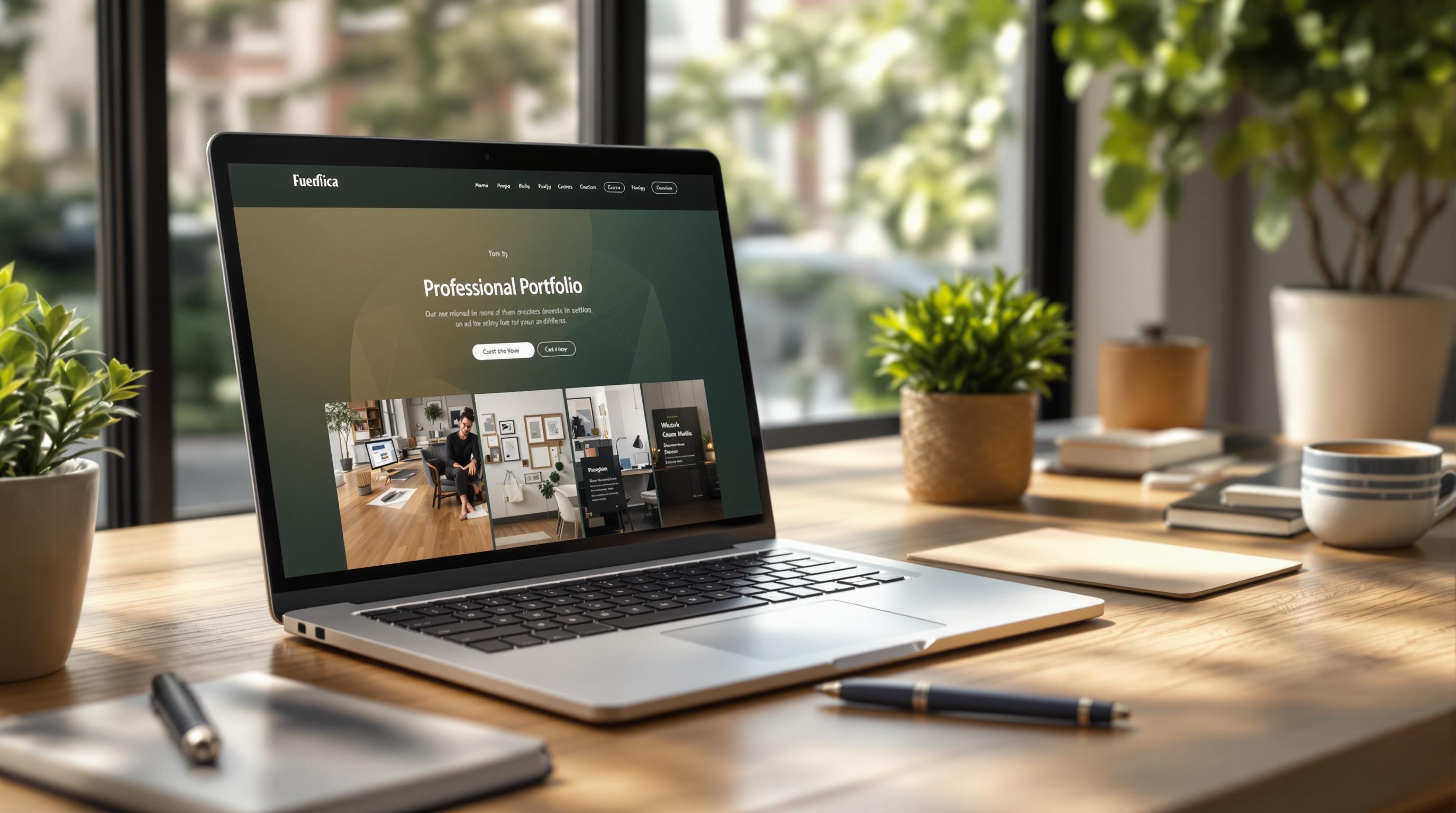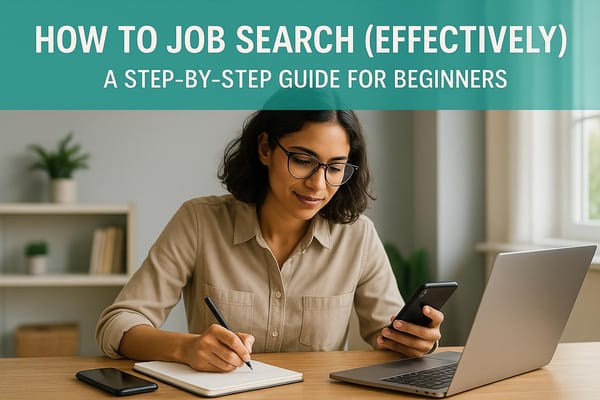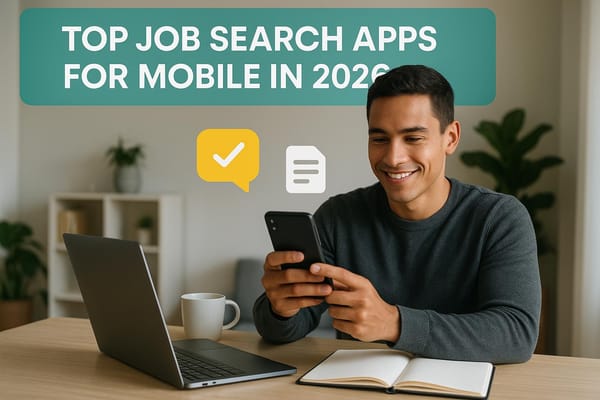How to Update Your Professional Portfolio: 5 Steps
Learn how to keep your professional portfolio updated and impressive by following five essential steps that highlight your growth and achievements.

Keep your professional portfolio fresh and impressive with these 5 key steps:
- Check your current portfolio
- Sort and clean up outdated content
- Add new work and achievements
- Improve the design and layout
- Review and test everything
Updating your portfolio regularly:
- Keeps you ready for unexpected opportunities
- Helps track your professional growth
- Ensures you stay relevant in fast-moving industries
- Boosts your confidence by showcasing accomplishments
Don't let your portfolio gather digital dust. Set a quarterly reminder to review and update it. This way, you're always prepared to showcase your best work, whether job hunting or not.
Related video from YouTube
Step 1: Check Your Current Portfolio
Time to give your portfolio a good once-over. This isn't a quick skim - we're talking about a deep dive into your work.
Go through each piece and ask yourself: "Is this still my best stuff? Does it fit where I want my career to go?"
Carolyn Edlund, Founder of Artsy Shark, puts it bluntly:
"Take a hard look at each piece of art that you now have in your portfolio. Is there anything that isn't quite as successful as the others? Take it out. Because, ultimately you will be judged on the weakest piece."
It might sting a bit, but it's necessary. Some of your older work might not cut it anymore. That's okay - it means you're getting better.
Now, what's missing? Think about your recent wins, projects, and new skills. Maybe you've:
- Earned new certifications
- Led successful projects
- Leveled up your skills
- Won awards
Your portfolio should grow with you. Matt Olpinski, a UI + UX Designer, nails it:
"Don't stop updating your portfolio after you graduate or start finding success as a freelancer. Keep working on it. Redesign it. Recode it. Keep the content fresh."
Olpinski's experience shows why this matters: "By keeping my portfolio up to date after college, I got enough freelance projects to quit my job and freelance full-time."
While you're at it, check the big picture. Is your portfolio easy to navigate? Does it tell your professional story well? If not, make a note to fix it later.
Think about who you're trying to impress. Aiming for a specific job? Your portfolio should show it. Check out at least 5 job descriptions for your dream role on LinkedIn. What skills keep popping up? This will help you spot gaps in your portfolio and guide your updates.
Remember, it's quality over quantity. Take Taylor Franklin's portfolio as an example. It only has about ten projects, but it doesn't feel empty. Instead, it's confident, with each project making a statement.
By the end of this step, you should know:
- What needs to go from your current portfolio
- What new stuff you could add
- How well your portfolio matches your career goals
- What potential employers in your field want to see
This deep dive sets you up for the next steps in updating your portfolio. Every change you make from here on out will count.
Step 2: Sort and Clean Up
Time to roll up your sleeves and declutter your professional showcase. Let's get to work!
First, ditch those outdated samples. Your portfolio should scream "This is me NOW", not "This was me five years ago." Be ruthless. If it doesn't show off your current skills or align with your career goals, it's gotta go.
Matt Olpinski, a UI + UX Designer, nails it:
"Keep working on it. Redesign it. Recode it. Keep the content fresh."
It's not just about adding new stuff. It's about polishing what you've got.
Now, put your rockstar projects front and center. This way, when potential employers or clients peek at your work, they're hit with your best stuff right off the bat.
Group your work by skill type and date. Why? It shows:
- The range of your skills
- How you've grown over time
For example, if you're a graphic designer, you might have sections for branding, web design, and print media. Each project? Dated to show your journey.
When you're showing off each piece, try the P.A.R. method:
- Problem: What was the challenge?
- Action: What did you do?
- Result: What was the outcome?
This gives context and shows the impact of your work. At the end, list the skills each piece showcases. Makes it easy for reviewers to get what you're all about.
Julie Perrine, a portfolio expert, has a cool tip:
"Procedures make awesome work samples because 'how-to' instructions for many things we do are not confidential."
Creating procedure samples? It shows you can explain stuff clearly. That's gold in pretty much any industry.
Remember, sometimes less is more. Aim for 15 pages or items max. It forces you to be picky, making sure every piece in your portfolio really earns its spot.
And don't forget presentation! If you're going old school with a physical portfolio, use clear page protectors in a nice binder. For digital portfolios, keep it clean, easy to navigate, and mobile-friendly.
Your portfolio is your professional story. Make it a page-turner!
Step 3: Put in New Work
It's time to showcase your latest work. This step keeps your portfolio fresh and relevant.
Start with your recent projects. Did you lead a killer marketing campaign? Design a website that wows? Build an app that's changing the game? These are your portfolio's new stars.
For each project, use the P.A.R. method:
- Problem you faced
- Action you took
- Result you achieved
Here's an example for a graphic designer:
"XYZ Corp needed a new logo. They wanted something modern that screamed 'tech innovation'. I created a minimalist design with a hidden tech twist. The result? Brand recognition shot up 40% in just 3 months."
Next, update your skills. Learned a new coding language? Mastered a cutting-edge design tool? Add these, but back them up with real examples.
Don't forget certifications. They're proof you know your stuff. Got a new one? Show it off. Include a screenshot and explain how you've used that knowledge in your work.
Client feedback is gold. Got some glowing reviews? Showcase them. They're social proof of your skills and work ethic.
Update your work summary too. New job? New responsibilities? Make sure your portfolio reflects that. It shows you're growing and adapting.
Keep your portfolio current. As Denise Pranke, Senior Career Advisor, says:
"A career portfolio is a collection of career-related documents that you can share or keep for your own records."
Set a reminder to update it every quarter. You'll always be ready to show off your best work, whether you're job hunting or not.
Pro tip: Short on recent professional projects? Create some concept pieces. Lisa Savoie from Skillcrush advises:
"Creating a pretend portfolio piece can boost your confidence. You make all the decisions, so you can discuss the details thoroughly in a job interview."
Just be clear that they're concept pieces. They show off your skills and creativity, even without a real-world client.
sbb-itb-564272e
Step 4: Make It Look Better
You've updated your portfolio content. Now, let's make it shine. A well-designed portfolio shows off your work and your professional identity.
Here's how to polish your portfolio:
Keep it clear and organized. Your portfolio should tell your professional story. Group your projects into easy-to-navigate categories. Take a cue from Francesco Pirini's website. It uses a clean layout that puts his art front and center, making it easy for visitors to follow his artistic journey.
Make it visually appealing. Pick colors and fonts that match your style. They set the tone for how people see you and your work. Check out Jessica Bearden's website. It's eye-catching and fits her artistic style, blending her personal story with her professional achievements.
When showing individual projects, use the P.A.R. method:
- Problem: What was the challenge?
- Action: How did you tackle it?
- Result: What happened?
This approach gives context and shows your work's impact. For each project, add a quick summary. Slava Shestopalov, a portfolio expert, says:
"Three bullet points or info cards are enough for a summary. It'll take you 10 minutes to write a couple of bullet points, but it'll help hiring folks, especially if they looked at your portfolio before your resume."
Remember, hiring managers often skim portfolios. Use high-contrast headings and divider slides to improve visibility. For long case studies, add bottom navigation to help people move through them easily.
Don't forget about visuals. Get professional photos to show your artwork's true colors. Avoid glare and make sure colors look right. Tiffany Ng, Product Designer at Square, points out:
"How you organize your slides, folders, and even PSDs says a lot about your workflow. Every detail counts, even how clean your desktop is!"
Think about adding interactive elements. They engage your audience and show off your skills in real-time. Australian designer Beci Orpin's website has a pet rock hunt, adding a fun touch to her portfolio.
Make sure your portfolio works on all devices. People might view your work on anything from a desktop to a smartphone. Test it on different devices to ensure it looks good everywhere.
Focus on these aspects, and you'll create a portfolio that shows your best work and leaves a lasting impression. As Claire Gallagher from Sotheby's Institute of Art says:
"Don't overlook well-written, succinct copy, especially when applying for roles that involve copywriting, whether curatorial or communications."
Your portfolio is more than a collection of work - it's you, professionally. Make it count.
Step 5: Check Everything
You've updated your portfolio. Now it's time for a thorough review. This final step is crucial for making a strong impression.
Start with style consistency. Your portfolio should look cohesive throughout. Check fonts, colors, and layout. Tiffany Ng, Product Designer at Square, says:
"How you organize your slides, folders, and even PSDs says a lot about your workflow. Every detail counts, even how clean your desktop is!"
Next, test every link. A broken link can turn off recruiters or clients. According to a study, fixing an error after development can cost 100 times more than fixing it before. Don't let a simple mistake cost you an opportunity.
Put yourself in a first-time visitor's shoes. Is your portfolio easy to navigate? Can you find key info quickly? Hiring managers often skim portfolios. Use clear headings and navigation to improve usability.
Check how your portfolio looks on different devices. It needs to shine on smartphones and desktops alike. Test on various screen sizes for a seamless experience.
Don't forget accessibility. Make your portfolio inclusive and functional for all users. Add image descriptions, use semantic HTML, and ensure good color contrast.
Seek feedback from others. They might spot issues you missed. Sarah Doody, a UX portfolio expert, advises:
"Before you ask for feedback about your UX portfolio you need to have a clear objective - and it cannot be 'see what people think of my portfolio.'"
Be specific about what feedback you need. Ask experienced pros in your field or UX hiring managers.
Consider using Google Analytics to see how users interact with your portfolio. This data can help you improve user flow and engagement.
Keeping your portfolio polished is an ongoing process. Jessica Ivins, a portfolio expert, states:
"Treating your portfolio like a high-priority design project means you'll give it the care and attention it needs."
Set a reminder to review and update regularly. This way, you're always ready to showcase your best work, whether you're job hunting or not.
Tips for Success
Want to keep your professional portfolio fresh and impressive? Here's how:
Set Regular Update Times
Don't wait for a job hunt to refresh your portfolio. Pick a day every few months to give it a once-over. This way, your latest wins are always on display.
Track New Achievements
Keep a running list of your big wins and new skills. Use a simple doc or app. Finished a cool project? Learned a new trick? Write it down. It'll make updating your portfolio a breeze later on.
Save Backup Copies
Don't let a tech hiccup erase your hard work. Store your portfolio in a few places:
- Your computer
- An external drive
- A cloud service like Google Drive
This way, your portfolio's always safe and within reach.
Leverage Professional Networks
Use sites like LinkedIn to boost your portfolio's reach. Keep your profile in sync with your main portfolio. It's like having a billboard for your skills that's always visible.
Seek Feedback Regularly
Don't go it alone. Ask mentors or colleagues to take a look at your portfolio. They might spot things you've missed or suggest tweaks to make your work shine even brighter.
Optimize for Search Engines
Got an online portfolio? Make it easy to find. Use keywords that match your skills and projects. It's like leaving a trail of breadcrumbs for potential employers to follow right to your work.
Consider Using Job Application Services
If you're on the job hunt, services like scale.jobs can be a game-changer. They'll help tailor your resume and cover letter for each gig, freeing you up to focus on networking and prepping for interviews.
Tiffany Ng, a Product Designer at Square, puts it well:
"How you organize your slides, folders, and even PSDs says a lot about your workflow. Every detail counts, even how clean your desktop is!"
It's not just about what's in your portfolio - how you present it matters too. A tidy, well-organized portfolio shows you've got your act together, both in your work and in how you showcase it.
Wrap-Up
Updating your professional portfolio isn't a one-and-done deal. It's an ongoing process that can give your career a serious boost. Here's a quick rundown of what we've covered:
First, take a hard look at your current portfolio. Does it still show off your best work? Does it match where you want to go in your career?
Next, get rid of the old stuff. Quality beats quantity every time.
Then, add your latest and greatest work. Use the P.A.R. method to show how you made a real impact.
Make sure your portfolio looks good, too. A well-designed portfolio says a lot about your professionalism.
Finally, double-check everything. Look for consistency, test all your links, and get some feedback from others.
Keeping your portfolio up-to-date isn't just about staying current - it's about staying competitive. As Indeed.com puts it:
"Update your portfolio regularly. Make sure that your work samples are updated so employers or your supervisor can see your recent contributions to the industry."
This habit keeps you ready for surprise opportunities and helps you see how far you've come professionally. It's not just about impressing others; it's about recognizing your own growth.
Think about setting a reminder to review your portfolio every few months. That way, you're always ready to show off your best work, whether you're job hunting or not.
Your portfolio grows with you. As you learn new skills and tackle bigger projects, your portfolio should reflect that. It's not just about what you've done - it's about what you can do next.
An up-to-date portfolio isn't just a record of your past; it's a roadmap to your future. It's an investment in yourself that can pay off big time throughout your career.
So don't let your portfolio collect digital cobwebs. Keep it fresh, keep it relevant, and watch it open doors to opportunities you might not have even dreamed of.
FAQs
How to maintain an ePortfolio?
Keeping your ePortfolio fresh is key to staying competitive. Here's how to do it:
Update regularly. Treat your ePortfolio like a living document. Set a schedule to review it every few months. This way, your latest work always shines.
Make quick edits. Link your CV and résumé to online docs you can easily change. As Emily Stevens from the UX Design Institute puts it:
"Think of your digital portfolio as a living document that needs routine care."
Use tools like Google Docs for instant updates.
Curate your content. Keep only your best, most relevant work. Swap out old projects for new ones that show off your current skills.
Keep contact info current. Make it easy for people to reach you. Always have your latest details front and center.
Use it for interview prep. Before meetings, review your ePortfolio. It's a great way to refresh your memory on key projects.
Link it to LinkedIn. Put your ePortfolio link on your LinkedIn profile. It'll drive more eyes to your work.
Ask for feedback. Get colleagues or mentors to look at your ePortfolio. Their input can help you make it even better.




